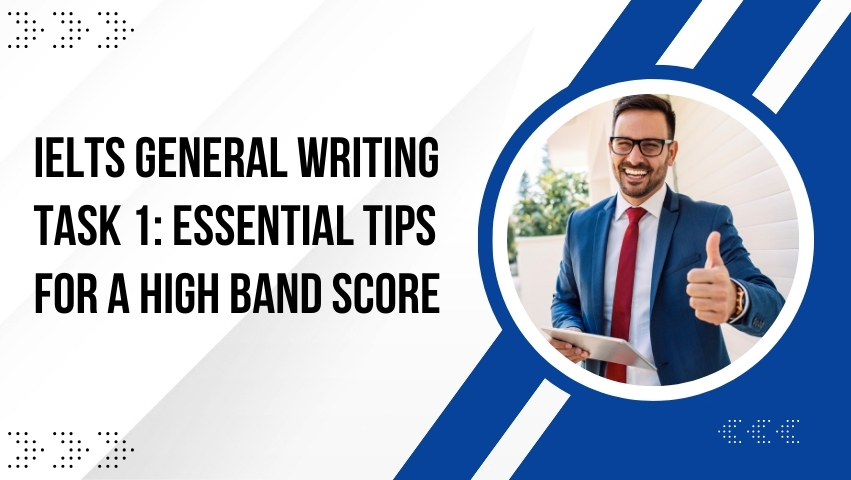Avoiding mistakes is just as crucial as knowing what to do. Here are some common errors to steer clear of:
- Misinterpreting the Prompt:
One of the biggest mistakes is not fully understanding what the question requires. Always take a moment to analyze the prompt and identify the key points you need to address.
- Inappropriate Tone or Style:
Using a tone that doesn’t match the letter’s context can lower your score. A complaint letter, for instance, should sound more formal and objective, while an invitation might be semi-formal or informal.
- Lack of Structure:
A well-structured letter helps convey your ideas. Avoid long, rambling paragraphs, and ensure each section of your letter serves a specific purpose.
- Grammar and Spelling Errors:
Simple mistakes in grammar, punctuation, or spelling can distract from the content of your letter. Proofreading is essential.
- Overuse of Complex Vocabulary:
While showing your language range is essential, overcomplicating sentences with rare words or overly formal language may lead to errors. Clarity is key.
- Ignoring Letter Format:
Not following a proper letter format (salutation, body, closing) can make your writing disorganized.
By being aware of these common pitfalls, you can tailor your preparation to avoid them, ensuring your response is both accurate and effective.
How to Structure Your IELTS General Writing Task 1 Letter Effectively
A well-organized letter makes a positive impression and helps you cover all the required points. Here’s a step-by-step guide on structuring your letter:
1. Salutation
- Start your letter with an appropriate greeting:
- For formal letters, use “Dear Sir/Madam” or the specific title if given.
- For semi-formal and informal letters, a simple “Dear [Name]” works well.
2. Introduction
- Briefly introduce yourself (if necessary) and state the purpose of your letter:
This helps set the context for the reader immediately.
3. Main Body
- First Paragraph:
Explain the reason for writing in detail. If you’re making a complaint, explain the issue; if you’re inviting someone, mention the event details.
- Second Paragraph:
Provide additional details or background information that supports your main point. This might include the issue’s impact or additional context about the event.
- Third Paragraph (if needed):
Offer a solution, a request, or further explanation as the prompt requires. Make sure you address all bullet points in the task.
4. Conclusion
- Summarize your request or state the expected response:
Express gratitude where appropriate and include a closing statement.
5. Closing
- Use a sign-off that matches the tone of your letter:
- For formal letters, “Yours sincerely” or “Yours faithfully” is appropriate.
- For less formal letters, “Best regards” or “Kind regards” is suitable.
This structure ensures that your letter flows logically, covers all necessary points, and presents a clear argument or narrative.
Formal, Semi-Formal, and Informal Letters in IELTS General Writing Task 1
Understanding the differences in tone and style is crucial to meeting the task requirements. Here’s how you can adjust your language based on the type of letter:
Formal Letters
- Tone: Polite, respectful, and impersonal.
- Language: Use professional vocabulary, avoid contractions (e.g., “do not” instead of “don’t”), and steer clear of slang.
- Structure: Clearly defined sections with precise language.
- Usage: Suitable for letters of complaint, requests, or formal inquiries.
Example Opening:
“Dear Sir/Madam,
I am writing to express my concern regarding the recent changes in the service provided by your company.”
Semi-Formal Letters
- Tone: Polite yet slightly less formal than a formal letter.
- Language: It is acceptable to use contractions and friendly expressions while still maintaining a respectful tone.
- Structure: Similar to formal letters, but can include a more personal touch.
- Usage: Appropriate for invitations, requests, or letters addressed to someone you know in a professional context.
Example Opening:
“Dear Mr. Smith,
I hope this message finds you well. I am writing to inquire about the upcoming event at your organization.”
Informal Letters
- Tone: Friendly, relaxed, and personal.
- Language: Casual language, contractions, and even colloquial expressions are acceptable.
- Structure: A more flexible structure can be less rigid but should still be clear in its purpose.
- Usage: Best for letters to friends, family, or acquaintances.
Example Opening:
“Hi John,
I hope you’re doing great! I’m writing to tell you about the fantastic trip I just had.”
Being mindful of these distinctions will help you adapt your writing style to suit the context and requirements of the IELTS task.
By following these essential tips and understanding the different formats and requirements, you’re well on your way to excelling in IELTS General Writing Task.
FAQs
Q1: How long should my IELTS General Writing Task 1 letter be?
Ans: Aim for around 150–200 words. This length provides enough detail without overwhelming the reader or deviating from the task requirements.
Q2: Can I use a template for my IELTS General Writing Task 1 letter?
Ans: While having a general structure in mind can be helpful, it’s best to adapt your response to the specific prompt on the exam rather than relying on a fixed template.
Q3: How important is following the letter format?
Ans: Very important. A straightforward salutation, organized body paragraphs, and an appropriate closing enhance clarity and positively impact your overall score.
Q4: Should I focus more on grammar or content?
Ans: Both are equally important. Even excellent content can be undermined by grammar mistakes, so balancing accuracy with clear, coherent ideas is crucial.
Q5: How can I improve my writing skills for Task 1?
Ans: Regular practice, getting feedback from teachers or peers, reviewing model answers, and paying close attention to the prompt can significantly improve your performance.
Q6: What are the key components of an effective letter?
Ans: An effective letter includes a straightforward salutation, a concise introduction stating your purpose, a well-organized body addressing all required points, and a polite closing.
Q7: How do I determine the appropriate tone for my letter?
Ans: The tone depends on the type of letter. Use formal language for complaints or official requests, semi-formal for invitations or inquiries, and informal for letters to friends or family.
Q8: What common mistakes should I avoid?
Ans: Avoid misinterpreting the prompt, using an inappropriate tone, poor structure, grammar and spelling errors, and overcomplicating your language.
Q9: How do I ensure I cover all bullet points in the prompt?
Ans: Before writing, spend a few minutes analyzing the prompt and listing out all the key points. Make sure each bullet point is addressed in a distinct paragraph or section.
Q10: Is it acceptable to use contractions in my letter?
Ans: Contractions are acceptable in informal and semi-formal letters. However, in formal letters, it’s best to avoid them and maintain a professional tone.
Q11: How much time should I allocate for Task 1 during the exam?
Ans: Aim to spend about 20 minutes on Task 1. This should give you enough time to plan, write, and review your letter without compromising Task 2.
Q12: What strategies can help me manage my time effectively?
Ans: Practice writing under timed conditions, allocate specific time slots for planning, writing, and proofreading, and continuously monitor the clock during the exam.
Q13: How can I improve the clarity and coherence of my writing?
Ans: Organize your ideas into clear paragraphs, use linking words to connect thoughts, and review your work to ensure that your ideas flow logically.
Q14: Should I write a rough draft before my final answer?
Ans: Yes, drafting a quick outline or rough draft helps organize your thoughts and ensures you include all necessary details before writing your final response.
Q15: How do I handle unfamiliar topics or prompts?
Ans: Focus on understanding the task’s requirements and structure your response around the given information. Use your general knowledge to generate relevant ideas and maintain a clear structure.
Q16: What vocabulary strategies can I use?
Ans: Use a mix of standard and varied vocabulary. Avoid repeating the exact words, and practice using synonyms and descriptive phrases that suit the context of your letter.
Q17: How important is proofreading?
Ans: Extremely important. Proofreading helps catch grammar, punctuation, and spelling errors that could lower your score. It’s a crucial step in ensuring a polished final piece.
Q18: Can I add personal opinions to my Task 1 letter?
Ans: Generally, Task 1 requires you to respond to a situation objectively. Keep your tone neutral and factual, focusing on the purpose of the letter rather than personal opinions.
Q19: How do I decide if my letter meets the IELTS criteria?
Ans: Review the IELTS writing band descriptors focusing on task achievement, coherence, lexical resource, and grammatical range and accuracy. Compare your practice letters with sample high-scoring answers.
Q20: What additional resources can help me prepare?
Ans: Utilize practice tests, IELTS preparation books, online sample letters, and feedback from teachers or peers. These resources can offer insights into areas for improvement and help you familiarize yourself with the exam’s expectations.


